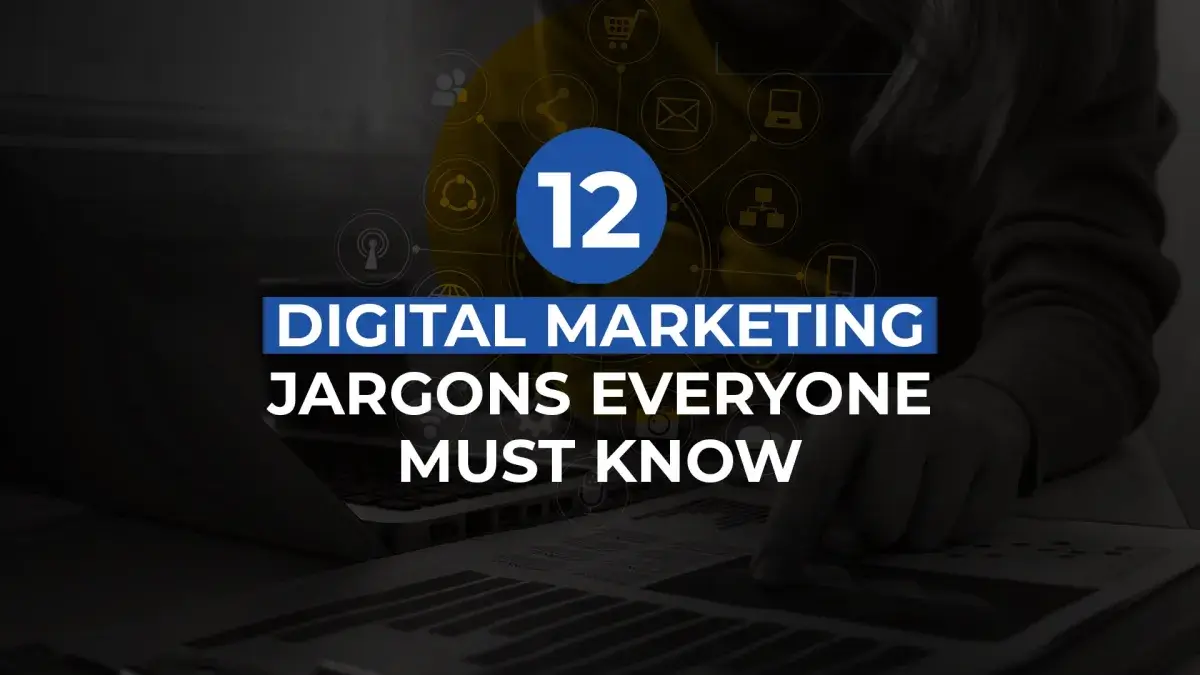12 Digital Marketing Jargons Everyone Must Know

Here's What We've Covered!
Digital Marketing is a relatively new field of marketing and there are a lot of terminologies related to it. While we come across most of these terminologies on a daily basis, the meaning of these isn’t clear. To simplify the knowledge of digital marketing, we must decode each and every jargon.
(1) Agile Marketing
Social media is the best channel to follow and know about any trending news. Agile Marketing is a way to swiftly craft a relevant and engaging content on the trending topics and share it on appropriate social media platforms. The main aim behind this type of marketing is to produce a content concentrating on the issue that is fresh and ongoing in the viewer’s mind. As a result, the impact of this marketing is stronger than the generic content.
(2) Conversion rate
The ultimate goal of a Digital Marketing campaign is to reach out to maximum users. E-commerce portals use Digital Media for promoting themselves. They intend to sell their goods, increase subscription, email sign-up and survey completion. If any intention is fulfilled it is called Conversion. In other words, the transformation of a viewer into a customer.
The conversion rate is a very crucial metric in e-commerce because it signifies the percentage of site traffic that completes a particular goal. All the companies aim for a higher conversion rate.
(3 )Conversion Rate Optimization
Simply put, Conversion rate Optimization is all about optimising your site to achieve more and more conversions. This can be done by making the site more engaging and persuasive. For example: highlighting the call to action buttons. Another way to optimise the site for conversion is to make the navigation easier and user-friendly.
(4) Customer Experience Management
Due to the power of social media, customers are increasingly interacting with the businesses and as a result, there has to a process to track, manage and improve all the interactions that the customer has with the business. This process is called Customer Experience Management (CEM). The interactions can also be offline. CEM builds better relationships with the customer and can help you create a distinct brand identity.
(5) Customer Lifetime Value (CLV)
This is a metric that defines the relationship of customer to a particular business throughout the entire tenure of its relationship. CLV helps to derive insights as to how to design future campaigns and enhance customer relationship.
(7) Technology Disruption
This is a term which has been used too many times by most of the marketers and analysts. Disruption is nothing but innovation. It is the process of transformation of a high-end complex product or service used by a handful of people to a more affordable and accessible service. The main aim of technology disruption is to be present in as wide a market as possible.
(8) Growth Hacking
Companies with a shoestring budget, mainly start ups do not have the wealth power to access conventional marketing routes. These companies use non-traditional and innovative methods of marketing to earn visibility and eventually gain market share. This process is known as Growth Hacking.
(9) Link Building
Link Building is the set of actions aimed at enhancing the quantity and quality of inbound links to a particular webpage. This is done with the aim of increasing the search engine rankings of that website. This is a part of Search Engine Optimisation activities and it shows the search engines that your site needs to rank higher because there are lot many websites referring to it and visiting it.
(10) Search Engine Marketing (SEM)
While SEO is a very popular term, SEM is still not known to many. Search Engine Marketing is the activity that involves positioning, researching and submitting the website within search engines to get maximum visibility, increased traffic and referrals from other search engines. This is also known as the paid search method.
(11) On-page SEO
On-page SEO is the act of optimizing individual web pages with an intention of ranking them higher in the search engines. The on-page SEO activity takes all aspects of the webpage into consideration. It is all about making the webpage more interactive and engaging.
(12) Off-page SEO
Off-page SEO is a method of raising the rank of a website through promotional via off-site means, other websites etc.
(13) Marketing Automation
Automation has made its presence felt in most areas of life. Marketing automation refers to a technology or software which sends marketing communications to people automatically on several digital channels. This is done to save time and money.
Resent Post
>
Emerging commerce career options in India (2026): From CA to Data Analyst
>
ACCA Opportunities You Didn’t Know About – Think Beyond Audit!
>
Which Courses After 12th Commerce With High Salary Are in Demand Worldwide?
>
How to Find ACCA Jobs Online After Qualifying: Real Portals, Tips & Career Guidance
>
Financial Modelling Classes in Hyderabad: Your Guide to the Best Institutes
Follow Us For All Updates!



